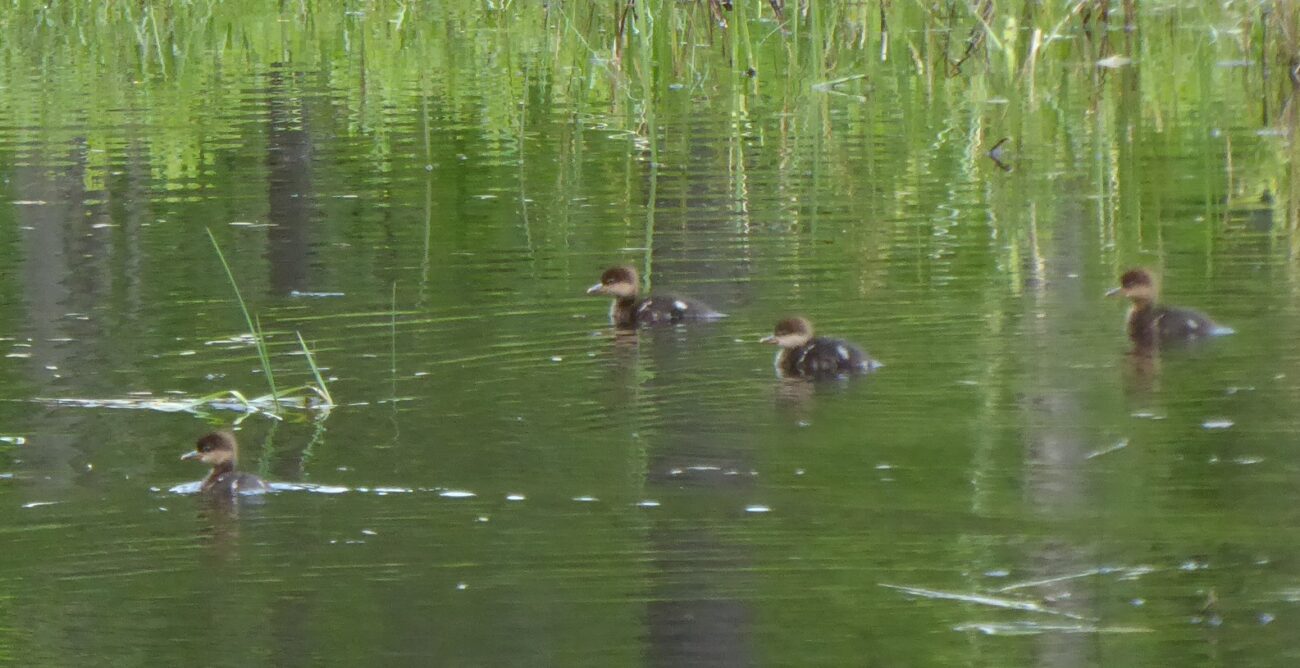
Twelve Baby Hooded Mergansers. Photo: Dorthea
Windstorms and power outages are the perfect excuse to make impromptu monitoring visits. There could be downed trees blocking trails, and you also never know what creatures are around.
Each visit to a Conservancy nature reserve holds a surprise, and on this day it was a dozen Hooded Merganser chicks. No parents to be seen anywhere. – Dorthea
See more Notes from the Field photos here
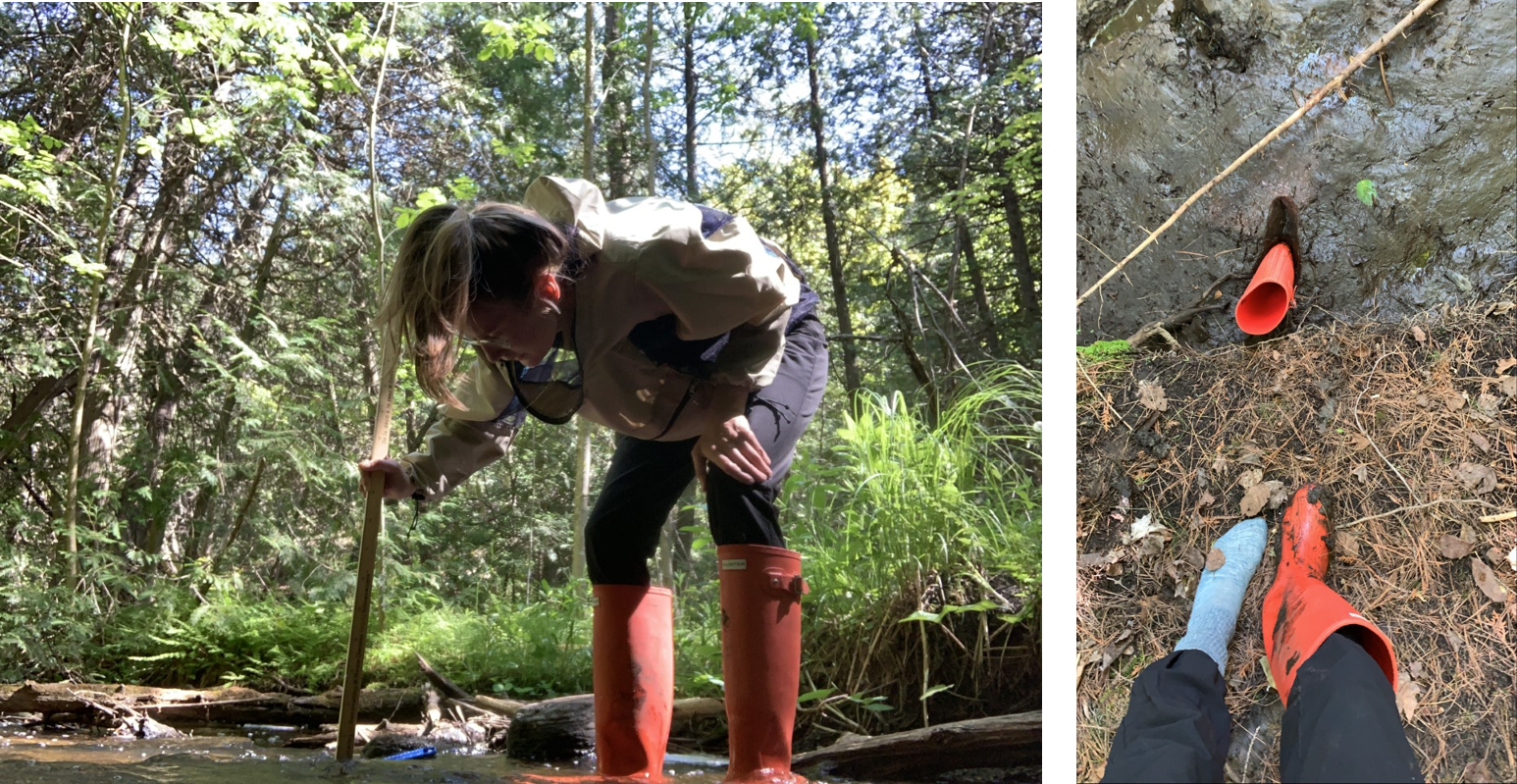
Joelle measuring the depth of Mill Creek at Scout Valley and her boot stuck in the mud!
Water quality monitoring teams are still checking their sites monthly. Since they can’t use the water kits, they have their own thermometers and meter sticks to test temperature and measure depth. These two parameters are important to measure to understand the change in creeks/streams. By comparing the results to previous years, we can determine if this year is wetter or drier and if the water temperatures have changed to due climate.
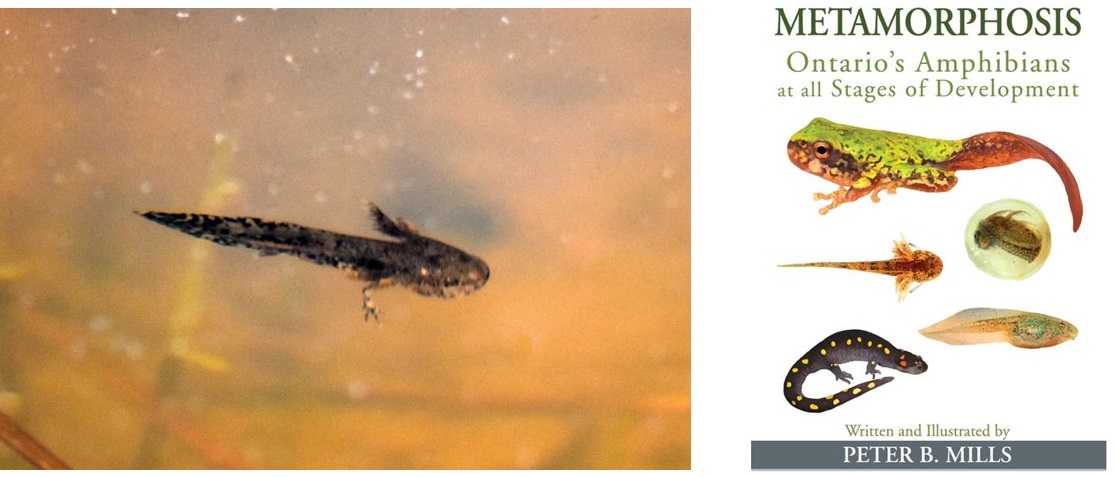
On a conservation easement in Carden, in a little pond beside a lane, several salamander larvae appeared one day. Checking Peter Mill’s book, Metamorphosis , Dave Hawke determined that they are Blue-spotted salamanders (Ambystoma laterale).
These salamanders typically spend their lives on the forest floor, living in underground burrows. After spending the winter underground, they will return to a swamp, pond, or marsh next spring when it is their turn to breed.
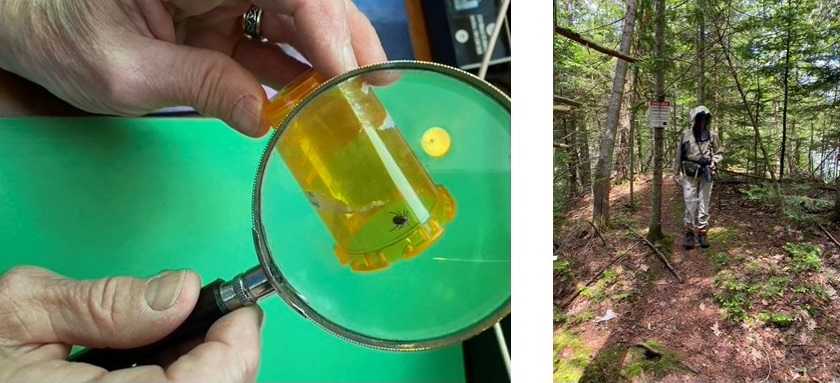
The threat of ticks is real! Don’t forget to: (a) Take tweezers and a small bottle with a lid into the field with you (b) Tuck your pants in your socks and wear a bug jacket and light coloured clothing when in the field (c) Do a complete tick check when you get home. For more information, including how to extract an embedded tick, visit our “Resources for Volunteers” Page
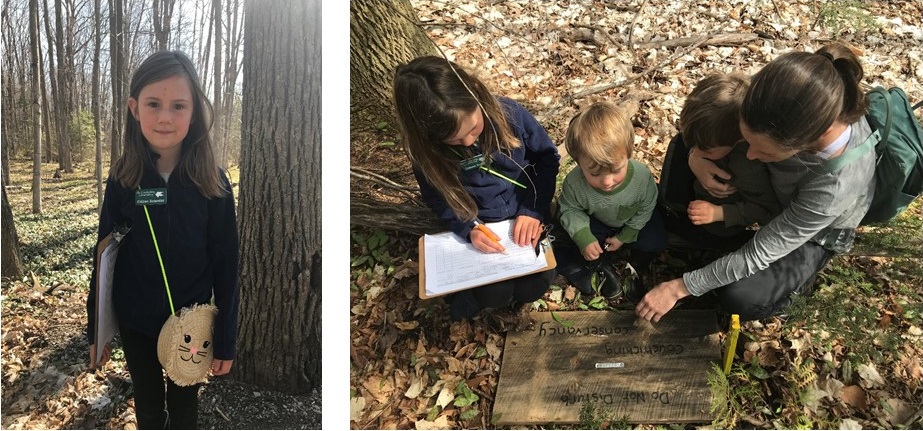
photo: Mark Trudeau
The Trudeau family stepped up at Church Woods during the quarantine to not only monitor for salamanders, but keep a close eye on this 10 hectare Nature Reserve in Shanty Bay while it was closed to the public. When we opened last Saturday, the whole family helped to ensure the opening went smoothly. Thanks to Kim and Mark, and their three children Adeline, Woodsley, and Graham. More photos here
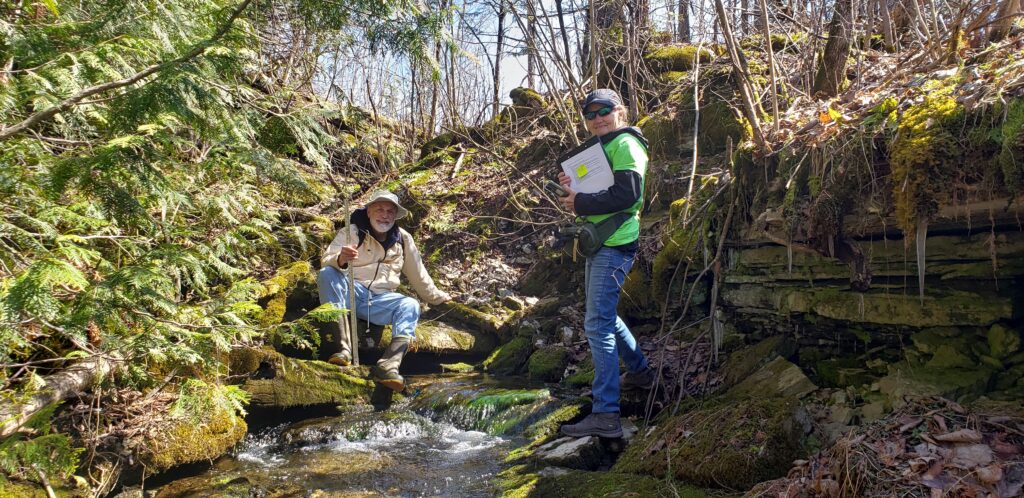
Al and Mel Tuck will be monitoring this Sweet little stream. Photo: Dorthea
Household teams are helping us get the job done through this quarantine.
On April 23rd, Melanie and Al Tuck began water monitoring at one of our newest acquisitions the Sweetwater Nature Reserve.
Since it would be very difficult to keep our water monitoring equipment sanitized as it passes from team-to-team, we are doing a revised protocol: water teams from the same household are simply doing temperature and depth at their sites. While basic, temperature and depth provide critical information on drought years and whether nor not our streams can be classified as cold water, cool water, or warm water. This has an impact on which aquatic species can live there.
The stream flowing through Sweetwater gives every indication of being a cold water stream, but Mel and Al will be providing a final verdict on this at the end of their monitoring season.
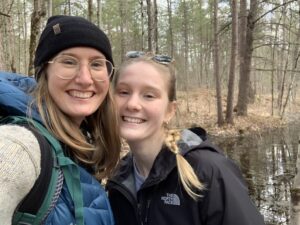 On April 18th, after much begging, Joelle coaxed her reluctant sister to the Adams Nature Reserve, where she monitors for salamanders. Once her sister saw her first egg mass she became enthusiastic and beat Joelle to finding three masses in the vernal pools!
On April 18th, after much begging, Joelle coaxed her reluctant sister to the Adams Nature Reserve, where she monitors for salamanders. Once her sister saw her first egg mass she became enthusiastic and beat Joelle to finding three masses in the vernal pools!
The Adams Nature Reserve is known for its rich vernal pools which provide seasonal habitat for the safe development of salamanders, frogs, and insects who are unable to withstand predation from fish.
For the past year we have kept these pools off-limits to the public due to their sensitivity and a dog’s fondness for playing in pools and puddles.
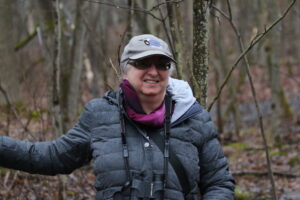 Ann and Neil Gray monitor both Turnbull Ranch and Kris Starr Sanctuary for Amphibians.
Ann and Neil Gray monitor both Turnbull Ranch and Kris Starr Sanctuary for Amphibians.
Neil got this terrific shot of Ann at Kris Starr April 8th .
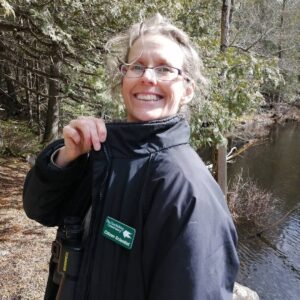 Katrina Hunt and Kim Ariss normally team up to do Frog Call Monitoring at the Adams Nature Reserve. Alas they do not live in the same household and so Katrina has taken on some Land Stewardship duties at Alexander Hope-Smith instead.
Katrina Hunt and Kim Ariss normally team up to do Frog Call Monitoring at the Adams Nature Reserve. Alas they do not live in the same household and so Katrina has taken on some Land Stewardship duties at Alexander Hope-Smith instead.
On April 5th she coaxed her daughter, Hannah, out the door to check in on Alexander Hope-Smith for us.
Photo of Katrina Hunt wearing her Citizen Science Badge: Hannah Hunt.
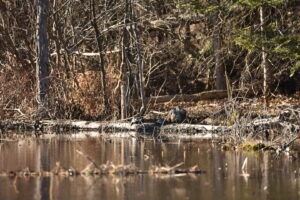 Turtles took advantage of the warm sunny day April 2nd to bask at one of our nature reserves. Can you spot them? There are two.
Turtles took advantage of the warm sunny day April 2nd to bask at one of our nature reserves. Can you spot them? There are two.
Reptile Monitoring season is official here!
Photo by Toby Rowland
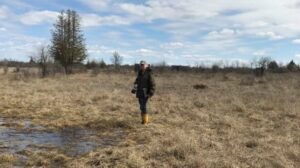
We received our first report of Western Chorus Frogs calling in the area on April 1st.
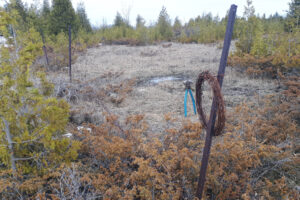 Dave Hawke continues to protect wildlife from harm, this time on the new Sweetwater Nature Reserve. About one kilometer of rusty barbed wire has been cut down along Pearl Carrick Road and rolled to lessen the chance of a deer, moose or enthusiastic birders running into the neck-height wire.
Dave Hawke continues to protect wildlife from harm, this time on the new Sweetwater Nature Reserve. About one kilometer of rusty barbed wire has been cut down along Pearl Carrick Road and rolled to lessen the chance of a deer, moose or enthusiastic birders running into the neck-height wire.

